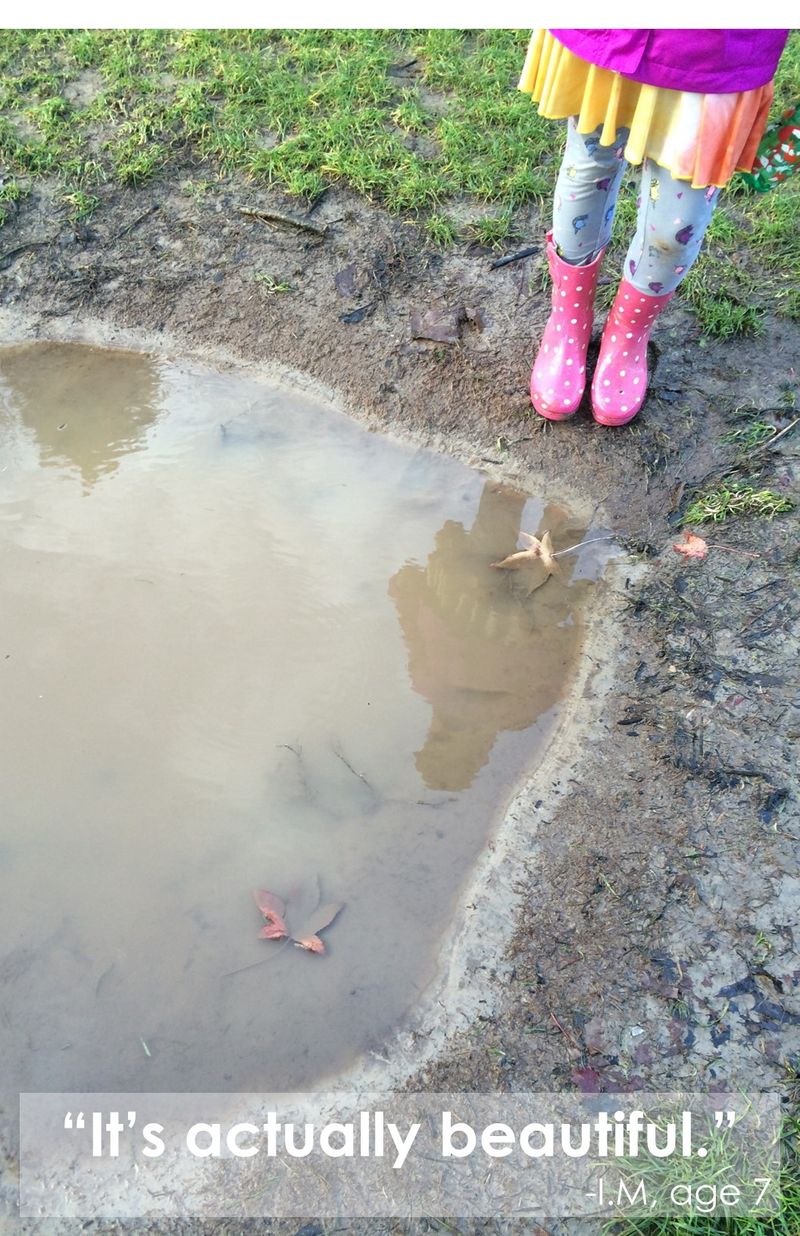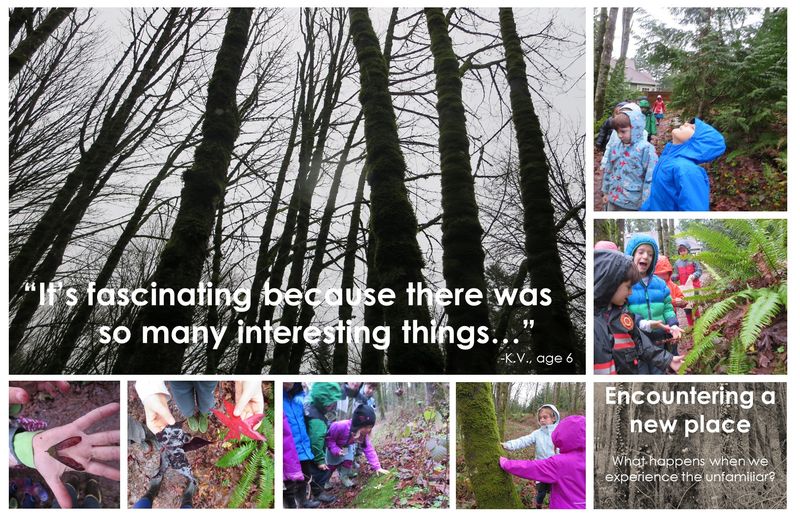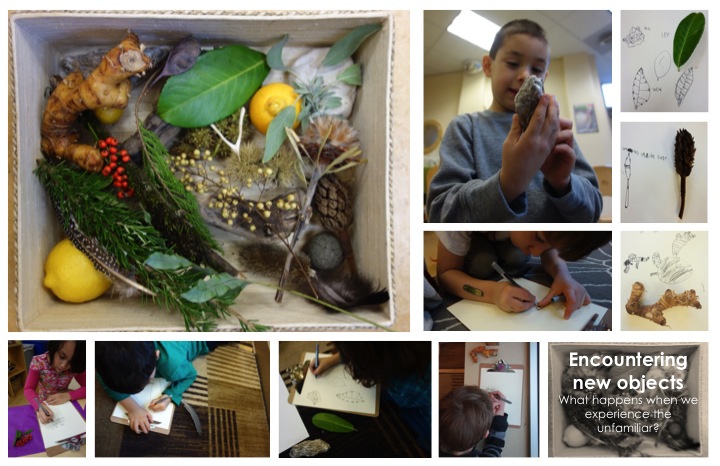Seeing By Feels

“When I did turn to untangle my curls, I saw a silken cradle in a hazel branch. I have thinks that the wind did just tangle my curls so I would have seeing of that cradle. It was cream, with a hazel leaf halfway round it. I put it to my ear, and I did listen. It had a little voice. It was not a tone voice; it was a heart voice. While I did listen, I did feel its feels. It had lovely ones. And then I did hurry away in the way that does lead to the house of the girl that has no seeing. I went that way so she too might know its feels, and hear its heart voice. She does so like to feel things as she has seeing by feels.”
-From the Diary of Opal Whitely
(Opal Whitely, 6 year-old naturalist and Opal School’s namesake)
As we look back on our many trips to the Arboretum this year so far, we find ourselves taking note of the many pictures of children holding treasures they’ve found. When doing so, it takes you back to each moment, each child’s call, “Look at this!” and the reaction, “That is interesting, can I take a picture?” Each spoken wonder, each curious notion, each connection and imagined possibility!
We brought photos of these moments back to our kindergarten and first graders. Before we could even ask, the children began to share what they noticed.
N.J.: It’s all in nature. All this stuff.
E.N.: Every picture you can figure out who is in the picture…you can kind of feel where we were when we found these things.
As we continued to look as these pictures, we began to think about all the things we chose to pick up, to look closely at, share with a friend and to even bring back to our classroom. Why these objects? What makes them special? Is it because they are familiar and comfortable? Is it because they are unfamiliar and interesting? Is it both?
After these initial conversations and wonderings with each other, we seemed to take a new lens on our next trips to the Arboretum. The children began actively vocalizing their observations as they were paying attention to what surrounded them and why they were giving their attention to particular items that they found in nature.
One dry day after many, many wet, rainy ones here in the Pacific Northwest, I.M. led a few friends to a big puddle in the middle of the Lower Meadow. As they looked at it’s murky depths, I.M. looked towards the puddle and proclaimed:
And it was…beautiful. The murkiness, in a certain light, gave up rainbowish hues as it reflected the colorful beauty that surround it…that surrounded us. I.M. and her classmates were uncovering together the beauty that might be found if we just take the time to uncover it.
As a class and a learning community, we all seemed to be trying out this new way of looking at the world that surrounds us as we pay attention to both the unfamiliar and the familiar. We’d begun visiting new spaces in the otherwise familiar Arboretum to take notice of what we were finding interesting, what we were choosing to pay attention to, and what stood out. All this wondering even provoked a teacher to ask curiously to the children as we headed outside on our weekly hike, “I wonder if we’ll be surprised by what nature has to offer us on this hike?”
A recent wet and windy day just before Winter Break, we went exploring a new and unfamiliar space in the Arboretum called Magic Bug Forest (named by former Opal Students years earlier). The teachers set the intention based on the recent interests and energy of the children in the natural spaces. An intention to slow down and notice things that were unfamiliar, familiar, interesting and provoking.
When back inside the classroom, additional natural materials were presented to the children in a closed treasure box, some familiar and some less familiar. The teachers asked the children to take notice of what they were thinking as they spotted an object they wanted to hold. “What surprises you? What words could connect to what you see? What do you want to share as you notice? …as you draw while you looked more closely?
“The naturalist and the artist are alike in their watchfulness. They are both servants of their eyes. A naturalist learns to look intently at things, to listen to them, smell them, touch them, to wonder what they are made of, what they do, how they are like or not like each other, what they mean…. much like what an artist does, looking for form and line and color and texture to define the relationship between spirit and substance.”
-The Undressed Art: Why We Draw; Peter Steinhart
As we begin life back at school after our Winter Break, we are excited to continue to look at the natural world that surrounds us with a new awareness of our connection to it and the wonder and beauty that draws us in.
As teacher-researchers, we wonder:
How will this heightened way of paying attention reveal the unique connections and relationships that this particular community has with nature?
What will looking at the world through new lenses tell us about how these children look at the world outside of the school setting?
After paying attention to the many conversations we had as a community concerning nature and our attention to it, A.S. returned to school assuring all of us that she is definitely carrying the same lens with her outside of the school walls. She tells her community, “I thought a lot about interesting things that are not familiar and I even found some in my backyard.”
Here’s to coming back together and experiencing nature and the world that surrounds us together. Through listening, noticing, experiencing and feeling all the feels, we will continue our journey of translating our own relationships between the beauty of an object and it’s heart voice.












Really enjoyed this post and sitting with the raw beauty of murky waters and the practice of paying attention. Thank you!